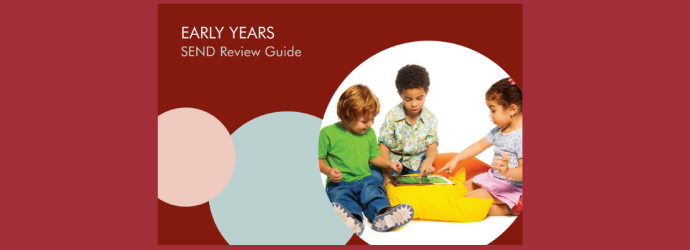
The Autism Resource Suite
- General
- 30 Mar 2021
Introduction to The Autism Resource Suite
The latest guidelines, resources and practical strategies for education professionals supporting autistic learners
It is estimated that one in every 100 people has autism. Therefore, it is very likely that every school will have children and staff who are on the autism spectrum. These resources are developed by the Autism Education Trust, along with the Autism Centre for Education and Research (University of Birmingham), the National Autistic Society and Ambitious about Autism through the Whole School SEND DfE-funded schools’ workforce contract.
Autism is a neurological difference that impacts how a person develops. There are three main areas of difference:
Communication and interaction: Differences in understanding and expressing communication and language, ranging from some individuals with little speech to those who are very articulate but still find communication hard. There are also differences in social understanding and understanding the feelings of others, which can influence building relationships.
Sensory processing: Differences in processing sensory information, such as touch, smell, hearing, taste, vision, body balance and body awareness. Some individuals may react more strongly to these (hyper-sensitive), while others may seek these stimulations (hypo-sensitive).
Flexible thinking and information processing: Differences in planning and processing information. This can influence generalisation and understanding of concepts. There may also be intense interest in specific topics or areas.
These differences could also bring some unique skills and talents, which could provide a different way of understanding and being. To acknowledge this difference, none of the resources in this suite use the word ‘disorder’. We have used the word autism or autism spectrum. Some people on the autism spectrum consider autism as the core of their self-identity and prefer using identity-first language, such as ‘autistic person’. Others feel that autism does not define them as an individual and prefer individual-first language, such as ‘person with autism’. In acknowledgement of these differing views and the fact that most of the research around preference of terminology does not include children’s voices, we have used a combination of terminology based on whether the resource is for adults or children.
There are four resources in this suite:
Guidance for school leaders on supporting autistic members of staff: This resource is mainly aimed at senior leadership teams and people with HR responsibilities, and provides ideas for developing an autism friendly working environment.
A SENCO’s guide to supporting learners on the autism spectrum: This is for SENCOs in Early Years, Primary schools and Secondary schools and builds on existing information for SENCOs in developing good autism practice within their settings.
Supporting learners with autism during transition: This resource focuses on two main stages of transition- from an Early Years setting to Primary school, and Primary school to Secondary school. The resource will be helpful to everyone involved in this process, such as SENCOs, teachers, teaching assistants, key workers.
Promoting autism inclusive attitudes: In this resource there are various ideas for raising peer awareness in Primary and Secondary school settings, which can be used by SENCOs, teachers and teaching assistants. These resources were co-developed with autistic young people.
During the process of developing these resources we received guidance and feedback from many people. Our sincere thanks to the steering committee members of the project: Alex Grady, Angela Holdsworth, Annabel Bowyer, DfE colleagues, Erica Wolstenholme, Frances Child, Kamal Hanif, Kate Campbell, Pamela Douglas, Pernille Petersen, Simon Knight, and Venessa Bobb. We would also like to thank all the schools which have piloted these resources and provided us with valuable feedback.
You may also be interested in

Webinar: Positively responding to increasing complexity in our mainstream schools part 3: Implementing effective curriculum in additional provisions in mainstream schools
- Webcasts
- 13 Nov 2025
This webinar builds on our initial exploration of this theme in Positively responding to increasing complexity in our mainstream schools – collaborative learning opportunities to inform strategic and systemic thinking.

Early Years SEND Review Guide
- General
- 24 Oct 2025
The Early Years SEND Review Guide was developed for Early Years practitioners and reviewers, to support the review and development of inclusive provision and practice.

Inclusive Leadership and Management in Schools
- Webcasts
- 23 Oct 2025
This engaging and practical webinar explores the crucial relationship between inclusion and Special Educational Needs and Disabilities (SEND) within schools.
